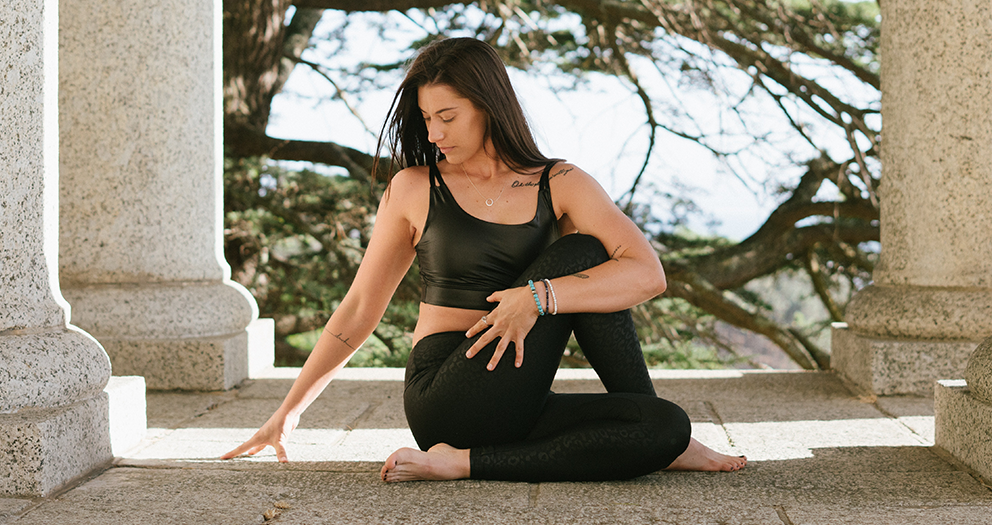Acidity, or acid reflux, is a common problem we all experience from time to time. Acid reflux is more common when the stomach produces excessive acid. The muscle ring located at the lower end of the alimentary tract cannot prevent the acid from moving through the food pipe, and it causes the formation of acid reflux and heartburn. The symptoms include nausea, bloating, burping, stomach irritation and stomach pain. It could cause disruptions to your daily life.
How does yoga help to cure acidity permanently
Acid reflux or acidity treatment can be done with yoga. Yoga asanas can soothe your stomach and reduce bloating. Yoga poses provide abdominal compression as well as gentle rubbing of internal organs. They help internal organs to enhance functioning and boost the blood flow. The yoga asana is a massage for the digestive organs and helps improve the balance of digestion and its function. Yoga postures are beneficial for losing weight and keeping your metabolism under control.
Yoga poses to treat acidity
1. Vajrasana
Vajrasana pose can fix hyperacidity and should be practiced after meals for 5 to 10 minutes. This posture improves the flow of blood into the stomach and which, in turn, increases digestion and strengthens the digestive system.
How to practise vajrasana:
1.1 Begin by kneeling on the floor. You may consider using a mat to ensure the most comfort.
1.2 Fold both your legs backwards, and your big toes should overlap each other.
1.3 Keep your spine erect and sit so that your buttocks are resting on the heels, and your thighs should press the calf muscle.
1.4 Relax and place your palm on your knees.
1.5 Close your eyes and inhale. Concentrate only on your breathing. Keep the position for 5- 10 minutes daily.
2. Supta Baddha Konasana
Supta Baddha Konasana assists in increasing blood flow in the lower abdomen and relieves acid reflux, and GERD effects. It is recommended to allow an interval of four to six hours between meals before practicing this pose.
How to practice supta baddha konasana:
2.1 Lie on your back on a yoga mat and relax your muscles.
2.2 Gently bend the feet and bring your feet together.
2.3 slowly bring your heels to the pelvic area and put your hands in the abdomen area.
2.4 Breath and hold it for 10 seconds. Please do it for 1 to 5 minutes.
3. Pavanamuktasana
A routine of Pavanamuktasana assists in stimulating bowel movements which is essential to remove waste materials and the toxins accumulated in our digestive tract. It is highly beneficial in treating stomach problems and poor digestion. It is among the most effective yoga practices for acidity.
How to practise pavanamuktasana:
3.1 Lie back on a yoga mat to keep your legs straight and breathe deeply.
3.2 Bend your legs to the chest area so that your thighs contact your stomach.
3.3 Inhale and lock your knees with your hands and try to touch the tip of your nose on the knees.
3.4 Slowly exhale and come back to the original position and repeat five times.
4. Paschimottanasana
Paschimottanasana is an outstanding yoga practice for acidity regulation and improved functioning of the abdominal organs. This gentle exercise puts pressure on the abdominal organs, which enhances their function.
How to practise Paschimottanasana:
4.1 Sit down straight on the floor by stretching your legs.
4.2 Slowly inhale and raise your hands above the head and stretch up.
4.3 Slowly breathe out and bend forward by placing your hands anywhere on the leg. If possible, grab your feet to pull you along.
4.4 Hold the position as much as possible.
5. Halasana
Halasana is a great way to deal with acidity. It helps you achieve peace which can aid in controlling the production of gastric juices within your stomach and thereby helps control acidity.
How to practise halasana:
5.1 Relax and lie down on your back and breathe normally.
5.2 Place your palm on the floor and exhale.
5.3 Rise your legs and try to bend them behind your head.
5.4 hold the position for 10 seconds and breathe in to return to the original position.




